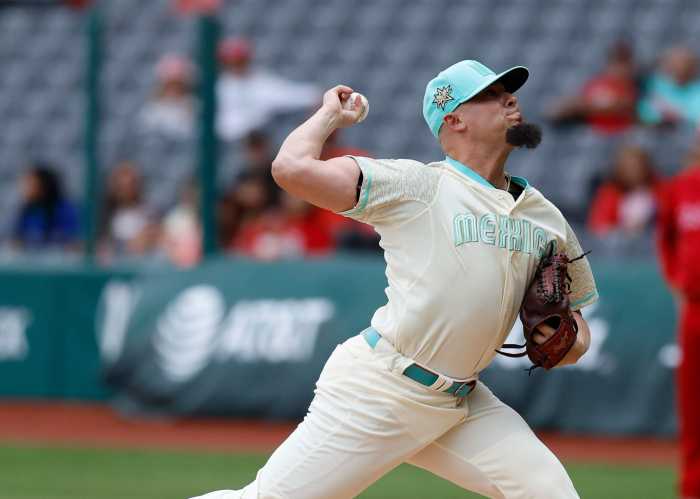 There’s no getting around it; comic books are cool. With film and television studios adapting everything from Batman and Spider-Man to The Walking Dead and Green Arrow, the general public’s knowledge and acceptance of comics has hit an all time high. Even aside from record-breaking box office franchises, and chart topping viewer ratings, the comic book in and of itself has gained tremendous popularity. The medium’s resurgence, in part, has undoubtedly spun out new media outlets; however, the industry’s top publisher’s have all had a hand in paving the way for this reinvigoration. The top two publishers, Marvel Comics and DC Comics respectively, have made tremendous strides in providing material that is accessible to new readers, and engages long time readers.
There’s no getting around it; comic books are cool. With film and television studios adapting everything from Batman and Spider-Man to The Walking Dead and Green Arrow, the general public’s knowledge and acceptance of comics has hit an all time high. Even aside from record-breaking box office franchises, and chart topping viewer ratings, the comic book in and of itself has gained tremendous popularity. The medium’s resurgence, in part, has undoubtedly spun out new media outlets; however, the industry’s top publisher’s have all had a hand in paving the way for this reinvigoration. The top two publishers, Marvel Comics and DC Comics respectively, have made tremendous strides in providing material that is accessible to new readers, and engages long time readers.
Though this sounds like a tight rope to walk, both publishers have found the means to ends. First off was DC Comics’ “The New 52.” More revitalization than reboot, DC sought to condense their decades old continuity into a much more lean and accessible universe that’s accessible to new readers without disregarding long time fans. Released last September, “The New 52” garnished a lot of attention both inside and outside of the comic community. Utilizing TV ads, newspapers ads, and movie theater ads, DC led a full on assault to get the word out. Since the initial release, which was riddled with controversy and speculation, DC’s “The New 52” has spent the last year providing solid stories and selling numbers that seemed previously unattainable. Reimaginings, updates, costume changes, and other new additions aside, DC has successfully revitalized their characters, mythos, and universe without sacrificing substance or their longevity.
Cut to about a year later.
Marvel Comics has found their own means to an end. The publisher has announced its plans for their universe retooling entitled “Marvel NOW!” Described as being “a new publishing initiative focused on freshening things up across the board,” Marvel hopes to successfully alter their universe, comparatively to DC’s “New 52,” this October.
Spinning out of their latest crossover event, Avengers V.S. X-Men (or AVX), which pits the publisher’s top two teams against one another, Marvel looks to revitalize their universe through a natural evolution. Throughout the last decade Marvel has published a string of crossover “event” books, which have altered continuity and the status quo of many of their characters. Now, Marvel plans to sew all the threads laid throughout past events, thus creating a more concise and accessible universe for both new and old readers.
In comparison with DC’s “The New 52,” which also spun out of a DC crossover event (Flashpoint), “Marvel NOW” looks to reshape their brand without a complete overhaul. Where DC condensed and de-aged their universe, Marvel looks to evolve their characters and universe in lieu of turning the clocks back. Though different means, Marvel’s retooling is undoubtedly striving to reach the same balance rival DC has found.
Though neither company’s efforts are strictly reboots, both publishers have had the term thrown their way, and both have been very vocal in denouncing the term. But in the wake of DC’s successful overhaul, “Marvel NOW” seems poised to be compared to their rival’s efforts. Since announcing the initiative, Marvel’s staff has been circulating through the press circuits to better distinguish the brand’s overall plan. One notable comment comes from Marvel’s Chief Creative Officer, Joe Quesada, in which he outlines exactly what “Marvel NOW” is. “There are some absolute reconfigurations of characters and their status quos and maybe an alter ego here and there, but this is not a reboot of the Marvel Universe.”
Throughout interviews and press releases, Marvel’s creative staff has stressed their new brand is more maturation than reboot. With that, “Marvel NOW” seems poised to be a natural evolution. But, just because its not a complete overhaul doesn’t mean it can’t serve as a jumping on point for new readers. With continuity threads sewn, the publisher’s expansive universe will likely be condensed in a way that incorporates the canon mythos, and reinterprets (or reinvigorates) intricate continuities. This approach allows for new readers, while engages current readers, i.e. it’s a win, win.
Marvel, like DC, understands that the success of something like this rests with their creative bullpen. Therefore, aside from the introduction and renumbering of titles, the publisher will shift their creative teams (writers, artists, inkers, letterers, etc.), giving many creators the chance to work on characters they previously hadn’t. This will not only allow for new stories, new dynamics, new looks, etc., but also a new feel to the universe as a cohesive whole.
With an interest in maintaining a cohesive universe, Marvel will bring a slew of titles to their respective ends in preparation for their new slate. With brand new titles, and other titles being renumbered (starting back at #1), the launch of “Marvel NOW” will see a focus that better displays and pertains to a post-AVX Marvel Universe. Though it is unclear how Marvel’s AVX will tie up the threads and status of the current universe, “Marvel NOW” seems set to more thoroughly integrate their characters throughout their universe. With titles such as Uncanny Avengers and All-New X-Men on deck, the publisher looks set to reinvigorate their universe through new character dynamics, new interactions, and new plot directions.
In addition to all of the changes in the books, Marvel will further pursue their digital initiative. Providing free digital copies with purchase of each book, Marvel is looking to further develop and explore the possibilities of digital comic storytelling. Marvel currently has an AR (augmented reality) app that takes you behind the scenes of the comic in effect, and they look to take it a step further. By creating a more interactive digital interface, the publisher hopes to take comics to a new frontier.
There isn’t a lot of information on “Marvel NOW,” as it doesn’t launch until October, but since it was announced in July many early reactions have been mixed. While many see this as a way for Marvel to make their comic book universe more similar to their immensely popular cinematic universe, others feel as if the change of pace is needed. Throughout the last decade Marvel has altered its status quo numerous times with a number of crossover events. With a continuity that has grown increasingly messy, this may be a good way of setting things straight and tying up loose plot points.
Though speculation is high, fans’ general optimism does not seem to be. With a teaser image of Nick Fury’s son, Nick Fury Jr. (who has a suspiciously similar look to that of Samuel L. Jackson’s film portrayal) released, fans eagerly await more information on the impending overhaul. In the face of pessimism here, it is important to note that many fans were speculative and pessimistic this time last year concerning DC’s overhaul; however, it turned out to be very successful. Alas, fans will have to wait until October to see exactly what Marvel has up their sleeve
For more information on DC’s “The New 52” visit dccomics.com.
For more information on Marvel Comics and Marvel NOW! visit marvel.com.
.

































